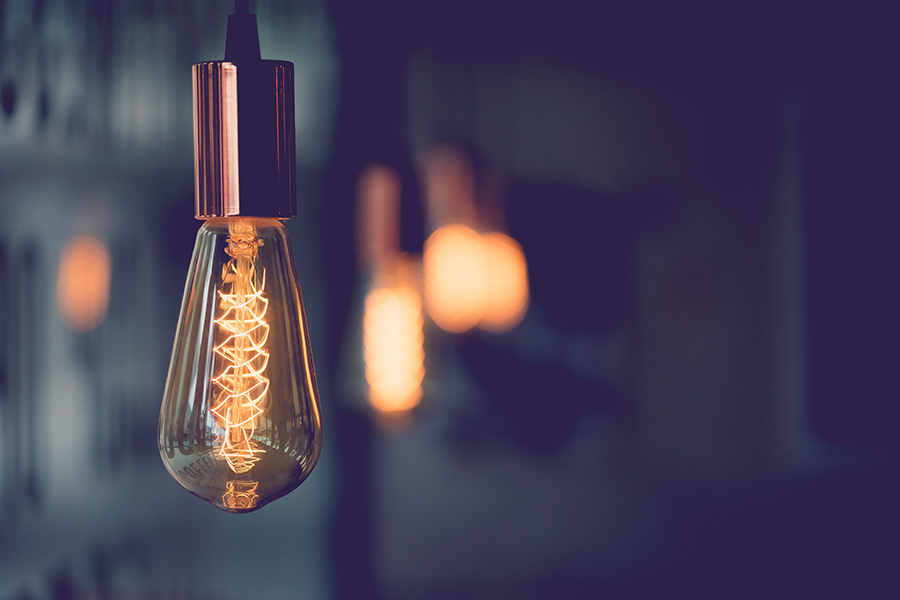All About Lumens | Shop the Look: Vintage Bulbs
Understanding lumens allows you to select the right bulb or fixture for any room in your home. With our help, you’ll learn the meaning of lumens, the difference between lumens and watts, how to navigate light bulb labels, the difference between total and delivered lumens, and the meaning of color temperature.
What are Lumens?
Lumens are a true measure of light output, or the total visible light produced by a light source. The higher a bulb’s lumen rating, the more light it provides. Don’t confuse lumens with candela or footcandles; these values measure light at a single point where lumens measures light output over an area.
Lumens vs Watts
With the rising popularity of LED bulbs and fixtures, lumens have replaced watts as the standard measurement of light output. Almost all light bulbs include a wattage rating, which indicates the amount of electricity they consume when they’re on. While watts were a reasonable way to estimate light output with incandescent bulbs, that’s not the case with LED bulbs. The many types of bulbs available such as LED, incandescent, compact fluorescent, and others all have very different performance characteristics. For example, LED light bulbs will use far less energy (watts) than incandescent bulbs with the same lumen rating.
The Language of Labels
Rapid changes in light bulb technology prompted the United States Federal Trade Commission to require standardized labels on most consumer light bulbs. These labels include the following information:
- Brightness – the amount of light a bulb produces, measured in lumens.
- Estimated Yearly Energy Cost – how much it costs to keep the bulb on for three hours per day when paying $0.11 per kWh.
- Life – the average service life of the bulb, based on three hours of use per day.
- Light Appearance – the color temperature of the bulb, a measure of how warm or cool the light it produces appears.
- Energy Used – how much power the bulb uses while it’s on, measured in watts.
Total Lumens vs Delivered Lumens
Total Lumens account for the absolute light output of a fixture or bulb. While this measurement will give you a general idea of brightness, it can be misleading. With almost any fixture, there will be light lost within the fixture’s shade or area that the fixture will be lighting. This loss of brightness is due to reflection off of the inside of the fixture or even off of surrounding walls and objects. With each reflection, the light output will be reduced before it reaches your workspace or desired surface.
Delivered Lumens, or delivered light, measures the useful light that is produced by a fixture. This is the most accurate measure of the brightness you can expect from your light fixture. To find the amount of delivered lumens, the amount of lost light is subtracted from the total lumens, this calculation will vary from fixture to fixture.
Color Temperature
While most of the values listed on the label are straightforward, color temperature needs a little explanation. Visible light includes many different colors. Color temperature represents the overall hue of the light produced by a light bulb. Low temperatures of 3,000 Kelvin and below, have a warm yellowish or reddish hue, while cool colors with temperatures of 4,100 Kelvin and higher have a bluish tint.
Choosing the Right Light Bulb
When selecting light bulbs, start by checking your light fixture. You’ll need to know its maximum wattage rating and types of bulbs it can use. Next, consider the surrounding space and how you use it. Choose bright, high-temperature bulbs for work areas such as kitchen counters or offices, and warmer bulbs that create a relaxed mood in living rooms or bedrooms. If the area has multiple uses, a dimmer switch that lets you adjust brightness to match current needs may be a good option. Be sure to use a dimmable light bulb in any fixture connected to a dimmer (not all LED bulbs and fixtures are dimmable).
Modern LED light bulbs come in a broad range of types and sizes. Use your new understanding of lumens, watts and color temperature to choose the right replacement light bulb for your light fixture.
Connect With Us
For more lighting and design inspiration, follow us on Pinterest, Instagram, and Facebook.


Leave A Reply